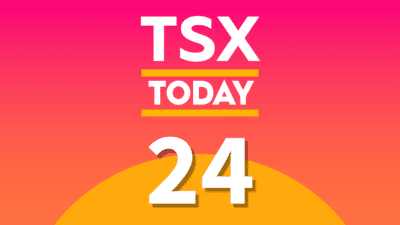Concerns are building around earnings headwinds facing the Canadian banks and the negative sentiment is taking a toll on the entire financial sector. For example, Manulife Financial Corp. (TSX:MFC)(NYSE:MFC) is down nearly 8% since the start of the year. The move out of the banks could be justified, but in the case of Manulife, traders might be throwing out the baby with the bath water.
Here are four reasons why I think investors should consider adding Manulife to their portfolios.
1. Growth of assets under management
Manulife has been on a buying spree.
In December 2014, the company announced an agreement to buy New York Life’s retirement plan services (RPS) business. The assets will become a part of John Hancock Financial, Manulife’s U.S.-based wealth management operation. The deal is expected to boost RPS assets at John Hancock by roughly US$50 billion.
In early September, Manulife announced plans to spend $4 billion for the Canadian assets of Standard Life Plc. The deal adds about $60 billlion to funds under management and gives Manulife a strong presence in Quebec, where it has struggled to build its business. The agreement also paves the way for the two companies to cross-sell their products globally. This could mean a huge gain for Manulife in growth markets such as India, where it doesn’t currently have any operations.
In the company’s Q3 2014 earnings statement, Manulife said it has $663 billion in funds under management, a 15% increase compared to the same period in 2013.
In the company’s Asian operations, Q3 year-over-year insurance sales jumped 46% to a record US$352 million.
2. Increasing dividends
Manulife lost a lot of friends during the financial crisis when it decided to slash the dividend by 50%.
Now, the company is trying to win back investor confidence by increasing the payout. During the second quarter of 2014, Manulife raised the dividend by 19%. The current payout of $0.62 yields about 3%.
At the time of the announcement, the market thought the company should have raised the payout by even more, given the payout ratio sat at just 24%. The subsequent acquisitions have put to rest any doubts about the strategy.
As the new assets get absorbed, the increase to free cash flow should find its way into the pockets of shareholders. Another big dividend increase could be in the cards for 2015.
3. Healthy balance sheet
Manulife finished the third quarter of 2014 with a Minimum Continuing Capital and Surplus Requirements Ratio (MCCSR) of 248%. The company has taken strong steps to reduce its exposure to volatility in both equity markets and interest rates.
Manulife’s financial leverage ratio continues to improve, dropping from 32.3% in Q3 2013 to 27.1% in the most recent quarterly report.
4. Compelling valuation
Manulife current trades at 9.5 times trailing earnings, which is lower than both its insurance peers, and the big banks.
The bottom line
The oil rout has pundits wringing their hands about the medium-term effects on earnings at the Canadian banks. One fear is that a sharp decline in Alberta’s overheated housing market could start a domino effect across the country. Manulife has a lower exposure to Canadian retail mortgages than the banks, and its foreign operations provide a balanced income stream.
Dividend investors should see better distribution growth from Manulife this year, and if the expected increase in U.S. interest rates materializes, Manulife’s shares should get a strong tailwind from the move.







